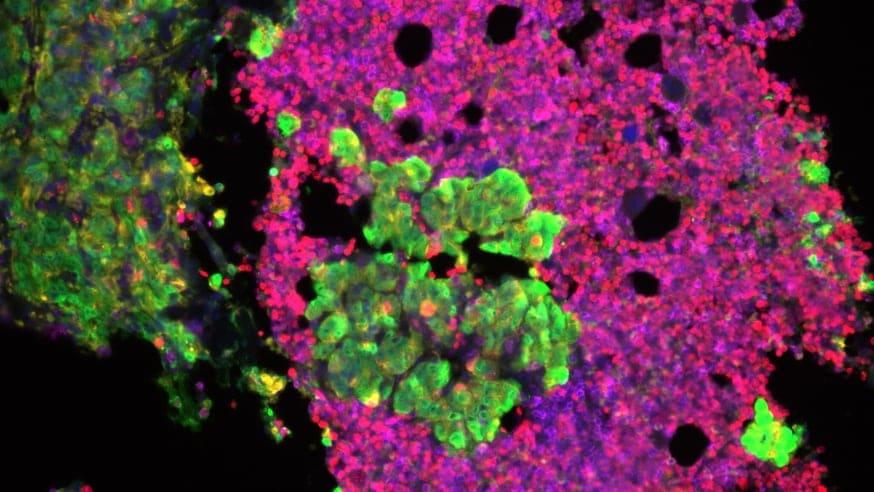KEY TAKEAWAYS
- The MARIPOSA phase III trial compared the efficacy and safety of ami+laz to osi as a first-line treatment for patients with EGFR-mutated, advanced NSCLC.
- The primary endpoint was PFS. Secondary endpoints were OS, ORR, DoR, PFS2, and safety.
- The study found that ami+ laz surpassed osimertinib as a first-line treatment for EGFR-mutated advanced NSCLC, demonstrating superior efficacy, safety, and OS trends.
Amivantamab (ami), a bispecific antibody targeting EGFR-MET with immune cell-directing properties, combined with lazertinib (laz), a CNS-penetrant, 3rd-generation EGFR TKI, has shown promising antitumor activity in phase 1 studies.
Researchers aimed to compare the efficacy and safety of ami+laz to osimertinib (osi) as a first-line treatment for EGFR-mutated, advanced non-small cell lung cancer (NSCLC) pts.
Treatment-naïve pts with EGFR-mutated (Ex19del or L858R) locally advanced or metastatic NSCLC were randomized (2:2:1) to receive ami plus laz, osi, or laz alone. The primary endpoint was progression-free survival (PFS) of ami+laz vs. osi, assessed by blinded independent central review.
Secondary endpoints included overall survival (OS), objective response rate (ORR), duration of response (DoR), PFS after the first subsequent therapy (PFS2), and safety. CNS monitoring was mandatory.
About 1074 pts were randomized (ami+laz, 429; osi, 429; laz, 216). Baseline characteristics were balanced: a median age of 63 years, 62% female, 59% Asian, and 41% with a history of brain metastases. At a median follow-up of 22.0 months, ami+laz demonstrated a 30% reduction in the risk of disease progression or death compared to osi (HR, 0.70; 95% CI, 0.58–0.85; P < 0.001).
Median PFS was 23.7 months (95% CI, 19.1–27.7) for ami+laz vs 16.6 months (95% CI, 14.8–18.5) for osi. ORR was 86% (95% CI, 83–89) for ami+laz vs 85% (95% CI, 81–88) for osi, with a median DoR among confirmed responders of 25.8 months (95% CI, 20.1–NE) vs 16.8 months (95% CI, 14.8–18.5), respectively. Early PFS2 data favored ami+laz vs osi (HR, 0.75; 95% CI, 0.58–0.98).
At interim OS, there was a favorable trend for ami+laz over osi (HR, 0.80; 95% CI, 0.61 to 1.05; P=0.1). EGFR- and MET-related AEs were higher for ami+laz except for diarrhea, which was higher for osi. VTEs were increased for ami+laz, mostly grade 1-2, occurred early and were effectively managed with anticoagulants. ILD rates were low and similar across arms.
The study found that ami+ laz surpassed osimertinib as a first-line treatment for EGFR-mutated advanced NSCLC, demonstrating superior efficacy, safety, and OS trends.
Clinical Trial: https://clinicaltrials.gov/study/NCT04487080
Cho BC, Felip E, Spira AI, Girard N, Lee J, Lee S, Ostapenko YV, Danchaivijitr P, Liu B, Alip A, Korbenfeld EP, Dias J, Sun T, Martinez M, Bauml JM, Shreeve M, Sethi S, Knoblauch RE, Hayashi H, Lu S. Annals of Oncology (2023) 34 (suppl_2): S1254-S1335. 10.1016/annonc/annonc1358.



